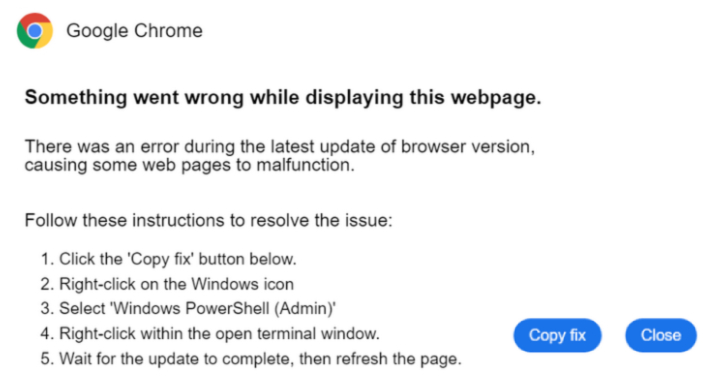
The Benefits of Value-Enhancing Application Due Diligence
In today’s fast-paced and technology-driven business landscape, applications play a pivotal role in the success of companies across various industries. Whether it’s customer-facing apps, internal systems, or software solutions that power core operations, applications are the lifeblood of modern organizations. Given their significance, conducting thorough due diligence on applications before acquisition or implementation has become paramount. This process, known as a Value-Enhancing Application Due Diligence (VEADD), offers a range of benefits that can substantially impact a company’s performance, efficiency, and overall success.
The Essence of Value-Enhancing Application Due Diligence
Value-Enhancing Application Due Diligence is a comprehensive examination of an application’s capabilities, architecture, code quality, security, scalability, and alignment with business goals. It goes beyond the traditional due diligence processes, which typically focus on financials, legal matters, and market analysis. VEADD seeks to uncover the hidden value within an application and assess its potential to enhance the organization’s operations, generate revenue, or reduce costs.
- Risk Mitigation
One of the primary benefits of VEADD is risk mitigation. Acquiring or implementing an application without a thorough understanding of its strengths and weaknesses can lead to unforeseen challenges and costly setbacks. VEADD helps identify potential risks related to security vulnerabilities, regulatory compliance, scalability issues, and performance bottlenecks. By addressing these issues upfront, organizations can make informed decisions and implement risk-mitigation strategies before they become critical problems. - Cost Savings
VEADD can uncover opportunities for cost savings and optimization. By analyzing an application’s codebase and architecture, experts can identify areas where inefficiencies exist. This may include redundant code, outdated technology stacks, or inefficient database structures. By addressing these issues, organizations can reduce ongoing maintenance costs and allocate resources more efficiently. - Improved Performance
Application performance is often a critical factor in customer satisfaction and operational efficiency. VEADD assesses an application’s performance metrics, identifying bottlenecks and areas for improvement. By optimizing the application’s performance, organizations can enhance the user experience, increase customer retention, and improve overall productivity. - Strategic Alignment
VEADD evaluates how well an application aligns with an organization’s strategic goals and objectives. This alignment is crucial for ensuring that technology investments contribute to the company’s long-term success. If an application does not align with the organization’s strategic direction, VEADD can help identify alternative solutions or integration strategies. - Scalability and Future Growth
As organizations grow, their technology needs evolve. VEADD assesses an application’s scalability, ensuring that it can accommodate future growth without major overhauls or disruptions. This proactive approach prevents scalability issues from impeding an organization’s expansion plans. - Security Assessment
In an age of increasing cyber threats, security is paramount. VEADD includes a thorough security assessment of the application, identifying vulnerabilities and potential risks. Addressing security concerns early in the due diligence process can prevent costly data breaches and reputational damage down the road. - Competitive Advantage
By conducting VEADD, organizations gain a competitive advantage. They can identify unique features or capabilities within an application that competitors may not have. This advantage can be leveraged to differentiate the company in the market and capture additional market share. - Enhanced Decision-Making
VEADD provides decision-makers with valuable insights and data-driven recommendations. This information empowers organizations to make informed decisions regarding whether to proceed with an acquisition, investment, or implementation of an application. It also helps stakeholders understand the potential risks and benefits associated with the decision.
The VEADD Process
Value-Enhancing Application Due Diligence involves a structured and systematic approach to assessing applications. The process typically includes the following steps:
- Initial Assessment: In this phase, the due diligence team defines the scope of the assessment and establishes clear objectives. They identify key stakeholders and gather information about the application, including its purpose, history, and any known issues.
- Technical Evaluation: This step involves a deep dive into the technical aspects of the application. It includes code reviews, architecture assessments, performance testing, and security audits. The goal is to identify strengths, weaknesses, and areas for improvement.
- Financial Analysis: While VEADD primarily focuses on technical aspects, it’s important to understand the financial implications of the application. This includes assessing the total cost of ownership, potential cost savings, and revenue generation opportunities.
- Strategic Alignment: VEADD assesses how well the application aligns with the organization’s strategic goals. This involves evaluating whether the application supports current business processes and whether it can adapt to future needs.
- Risk Assessment: Identifying and mitigating risks is a critical aspect of VEADD. This includes evaluating security risks, compliance issues, and potential disruptions to operations.
- Recommendations: Based on the findings of the assessment, the due diligence team provides recommendations to the organization. These recommendations may include actions to address identified weaknesses, optimize performance, and align the application with strategic objectives.
- Decision-Making: Armed with the insights and recommendations from VEADD, decision-makers can make informed choices about whether to proceed with the application acquisition, implementation, or investment.
Real-World Examples of VEADD Success
Several companies have reaped the benefits of Value-Enhancing Application Due Diligence in their strategic decision-making processes. Let’s explore a couple of real-world examples:
Example 1: A Financial Services Firm
A financial services firm was considering the acquisition of a software platform to streamline its operations and enhance customer experience. Before finalizing the deal, the firm conducted VEADD to assess the platform’s technical capabilities, security, and alignment with their strategic goals.
The VEADD process revealed that while the platform offered valuable features, it had scalability limitations that would hinder the firm’s growth plans. Additionally, several security vulnerabilities were identified. Armed with this information, the firm negotiated with the software vendor to address the scalability and security issues as part of the acquisition agreement. This proactive approach saved the firm from costly post-acquisition investments and potential security breaches.
Example 2: A Retailer
A large retailer was planning to implement a new e-commerce platform to compete more effectively in the online marketplace. To ensure the success of this significant investment, the retailer conducted VEADD.
The assessment revealed that the chosen e-commerce platform had performance bottlenecks that could result in slow loading times during peak shopping seasons. Additionally, there were integration challenges with the retailer’s existing systems. Armed with this knowledge, the retailer made necessary optimizations to the platform’s architecture and implemented performance enhancements. As a result, they experienced a smooth transition to the new platform and avoided customer dissatisfaction due to slow website performance.
Conclusion
Value-Enhancing Application Due Diligence is a critical process that empowers organizations to make informed decisions regarding their technology investments. By assessing an application’s technical capabilities, alignment with strategic goals, and potential risks, organizations can mitigate challenges, unlock hidden value, and gain a competitive advantage.
In today’s rapidly evolving business landscape, where technology is a driving force behind success, VEADD is not just an option; it’s a necessity. It ensures that organizations make sound investments, optimize their operations, and position themselves for long-term growth. As the importance of applications continues to grow, the benefits of VEADD become even more apparent, making it an indispensable part of the decision-making process for companies across all industries.
Contact Cyber Defense Advisors to learn more about our Value-Enhancing Application Due Diligence solutions.





